20+ B2B Marketing Samples
-
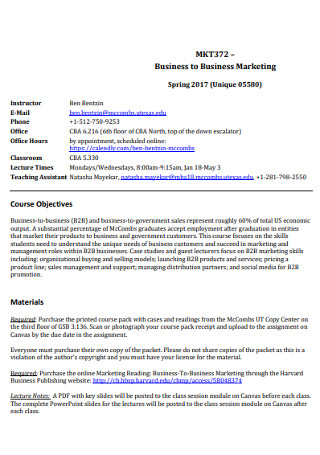
Sample Business to Business Marketing
download now -
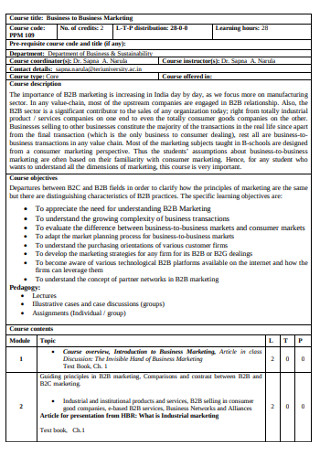
Basic Business to Business Marketing
download now -
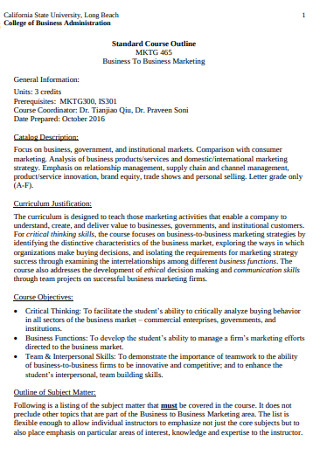
College Administration Business to Business Marketing
download now -
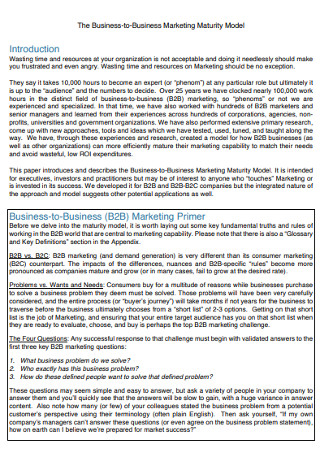
Business-to-Business Marketing Maturity Model
download now -
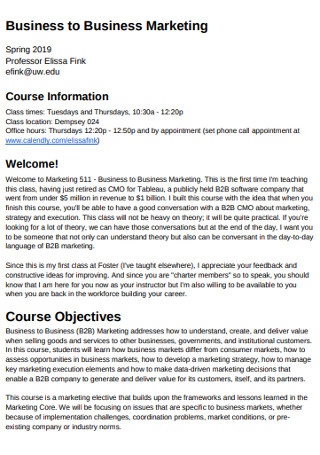
Formal Business to Business Marketing
download now -
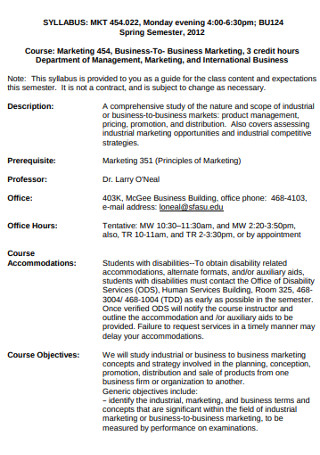
International Business to Business Marketing
download now -
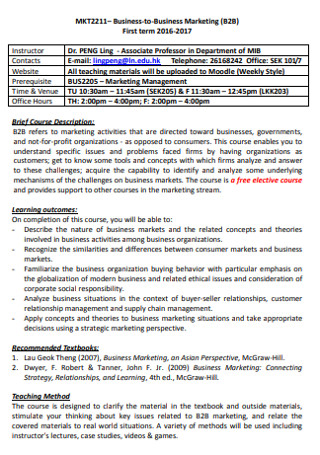
Business-to-Business Marketing in PDF
download now -
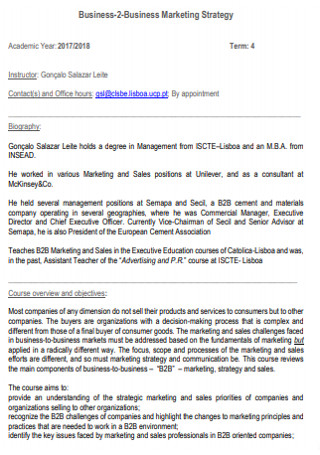
Business-to-Business Marketing Strategy
download now -
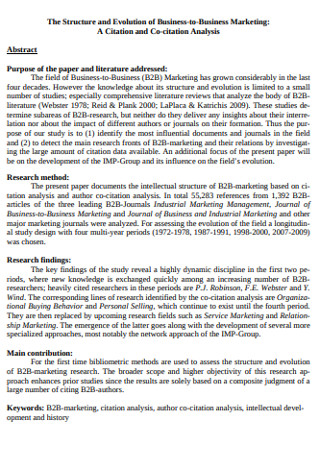
Business-to-Business Marketing Evaluation
download now -
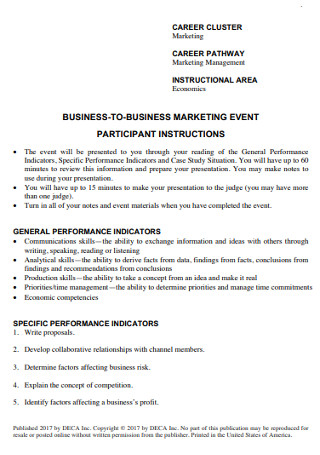
Event Business to Business Marketing
download now -
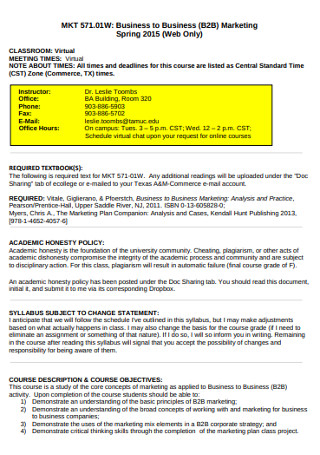
Printable Business to Business Marketing
download now -

Internet Business to Business Marketing
download now -
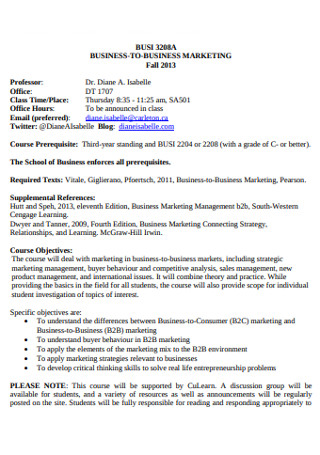
Sample business to Business Marketing in PDF
download now -
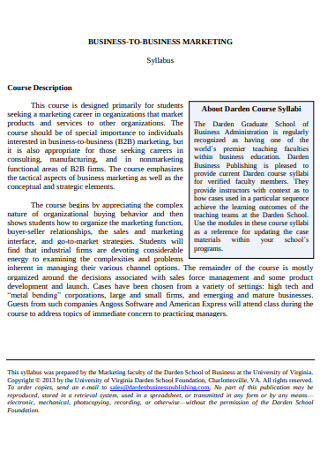
Simple Business to Business Marketing
download now -
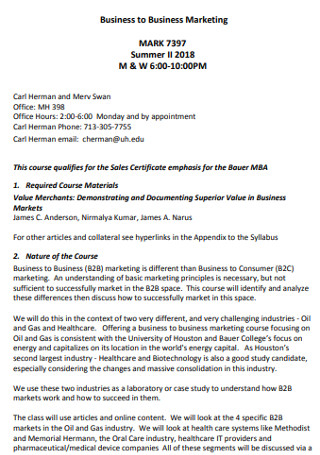
Business to Business Summer Marketing
download now -
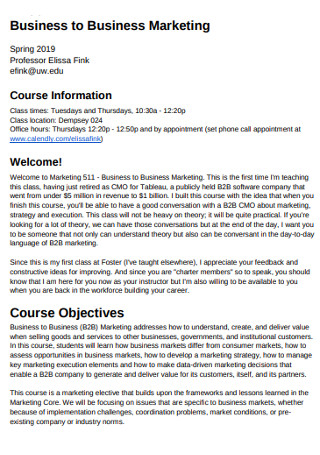
Business to Business Marketing Format
download now -

Business-to-Business Marketing Lists
download now -
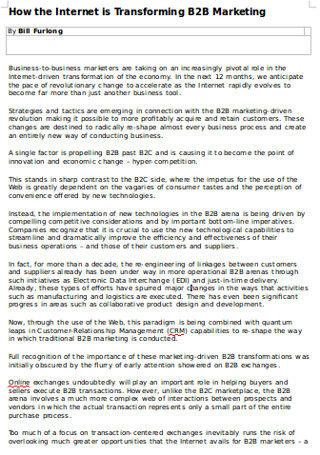
Internet Transforming B2B Marketing
download now -
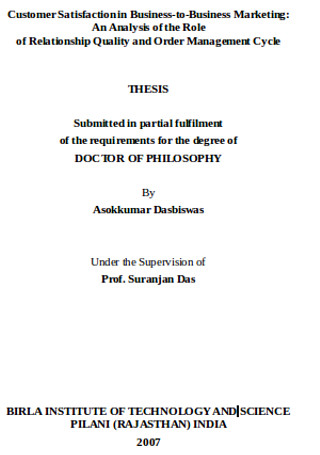
Customer Satisfaction in Business-to-Business Marketing
download now -
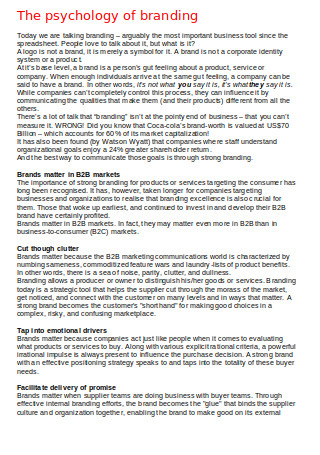
Business to Business Marketing
download now -
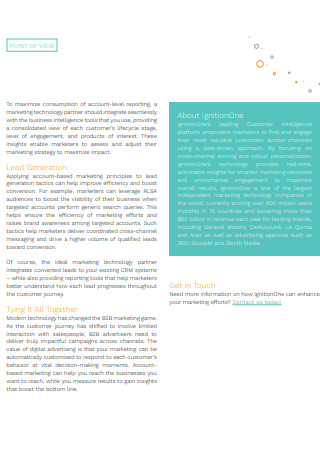
Digital Strategy for B2B Marketers
download now -
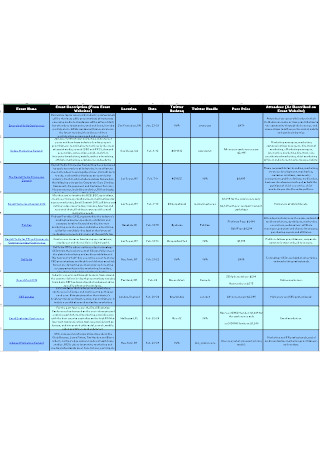
B2B Sales Marketing
download now
“71% of B2B researchers start their research with a generic search.”
“55% of B2B buyers say they search for product/vendor information on social media.”
“80% of B2B leads come from LinkedIn.”
What Is B2B Marketing?
B2B (business-to-business) marketing refers to a systematic set of efforts that are geared toward achieving the needs of a company or organization. A B2B marketing agency functions to cater to the things that other businesses need to operate, grow, and profit. This includes the raw materials, finished goods, services, or consultation that firms from a particular industry require to pilot their operations. While B2B and B2C marketing techniques rely on the same principles, they do differ in terms of execution. B2B marketing campaigns, for instance, focus on meeting the price and profit potential that buyers consider to make their decision.
Types of B2B Marketing Plans
B2B marketing plans differ from the average marketing plans due to their complex, focused, and tactical orientation. These factors affect the length of time it takes to finish the program and execute their components. But settling with a back-of-the-napkin type of approach is a risk you don’t want to take, which is why it’s crucial to have a detailed roadmap that will guide your business from its current to future state. So if you have your goals but don’t know what type of plan it needs, it’s best to understand the basic types of marketing plans that could suit your circumstance.
1. Strategic Marketing Plans
These are recognized as the kings of all sample marketing plans that growth-minded companies are smart enough to invest in. Strategic B2B plans are the perfect fit for businesses that want to differentiate themselves from competitors and combine in-house and outsourced marketing resources to execute their tactics. However, the costs to put together this marketing plan requires a significant investment that business executives need to consider carefully before finalizing a deal. These plans are most needed when you have growth-oriented goals and believe that marketing plays a critical role in obtaining them.
2. Niche Marketing Plans
Consider these plans as a follow-up to the previous type. Niche marketing plans are suitable for B2B companies that have already done all the heavy lifting. These plans are typically developed to help you penetrate into a market segment and gain awareness in a new niche. Strategy shifts also call for the execution of a niche marketing plan. They are updated annually to ensure that resources are utilized properly to help the company flourish while reducing the costs of acquiring new clients.
3. Product, Service, or Software Launch Plans
Launch plans are designed to introduce (or reintroduce) an offering or the latest version of such to the consumer public. But these plans vary greatly in complexity and must be developed cautiously to avoid timing issues. Rushing to market your products or services without a clear plan in place is bound to generate poor outcomes that could jeopardize the reputation of your B2B. Launching a new offer can be an exciting time for your company, which is why it’s important to gather your ideas and plan meticulously at least six months prior to launch.
4. Marketing Action Plans
Smaller B2B marketing companies that possess limited growth goals are likely to benefit the most from a marketing action plan. The plan is comprised of tactics that are organized in the form of a campaign or series of campaigns that leverage existing marketing technologies and infrastructure to help you accomplish your goals. Companies that want to highlight a specific aspect in their operations can employ the action plan with little difficulty. Although these plans are relatively easy to create, unrealistic expectations may cause problems for strategic marketers.
How to Run a B2B Marketing Campaign?
A catchy tagline and a few print ads aren’t enough to make your B2B marketing campaign succeed. Having a million dollars to spend on a good campaign ad might work in B2C, but the barbarous world of business-to-business marketing isn’t a good place for those who fail to think critically. If you want to garner favorable results with your campaign, you have to make sure you’re taking the correct steps to get to where you want to be.
Step 1: Determine Your Selling Points.
What makes you different from competing brands? Having a unique selling proposition not only sets you apart from the competition, but it also defines your superiority in a way that engages a targeted audience. It should give people a reason to care about your business message and choose what you have to offer over the rest. This can vary from business to business. Some examples include a promise for faster service, affordable deals, free upgrades, longer product lifespans, and other incentives that may entice a prospective customer.
Step 2: Define the Marketplace.
Get to know your audience. The more you know about your potential customers, the better you’ll be able to connect with them on a personal level. You can obtain higher returns with your B2B marketing campaign if you ponder on the right questions. Who is your product or service targeted at? Who are the key influencers that make the purchasing decision? What are their pain points? What are they asking? All these questions will help you gather enough data to formulate a buyer persona. This is an essential piece of the B2B marketing mix that allows you to understand the day-to-day challenges and realities faced by consumers.
Step 3: Identify Your Offers.
Once you have piqued the interest of your audience, you have to make it easy for prospects to convert. There are a dozen ways to do this but as a rule of thumb, you’re better off with lower-commitment conversion points. You can engage with prospects through newsletters from your B2B email marketing campaign or similar strategies that require lesser interactions between a salesperson and a buyer.
Step 4: Establish the Message and Creative.
It’s long been established that what works for one business might not work for the other. In B2B marketing, you’re bound to differ from another business in terms of brand, industry, and market segment. While you could be selling a similar type of product, the two things that make you dramatically different from each other is the brand you own and the audience you’re after. When you develop creatives for your B2B marketing campaign, it’s important to tune your messaging and visuals according to the interests of your chosen audience.
Step 5: Prepare a Campaign Workflow.
The best way to run a marketing campaign is to start by building a workflow. Your campaign journey begins with the initial engagement and ends with the final conversion. The workflow lets you visualize the process and prioritize items that need to be created to turn your campaign into a reality. There are a number of tools that allow you to reach out to prospects directly or through an online-based platform. Campaigns that are drawn from B2B digital marketing and print advertising are generally limited to your prospect’s behavior and your marketing budget. What matters most is your ability to design a workflow that will generate the best possible results.
Step 6: Set Goals and KPIs.
You won’t be able to run a B2B marketing campaign without determining what you are trying to accomplish with the campaign and how success will be measured. Setting goals that are specific, measurable, attainable, relevant, and timely should bring you closer to your end goal. It’s important to make this explicitly clear from the get-go to ensure that the rest of your strategies follow through. You also need to think about how you plan to track your progress toward these goals. Tracking key performance indicators can do a lot in terms of keeping your campaign on the right path.
Step 7: Start and Monitor the Campaign.
If you think your B2B marketing efforts end once your campaign goes live, you might want to rethink your approach. Setting the campaign and forgetting it as soon as it is executed will only lead to poor outcomes. Constant testing is advised to make sure that your SMART goals from the previous step are met. You must monitor how your campaign is performing on an ongoing basis to assess the strong and weak points that can be optimized or addressed. You might experience a few hiccups along the way, but that shouldn’t discourage you from nurturing your efforts to produce better results.
The Dos and Don’ts of B2B Marketing
Creating human connections in B2B marketing is far more complicated than it is in B2C marketing. Marketers in this discipline take a different approach to secure longer relationships with their targets for continuing and future transactions. But how can a company master B2B marketing and get a better chance of turning leads into conversions? It’s simple. Find out what works and what doesn’t through the dos and don’ts of the industry.
What to Do
1. Do articulate your business in a customer-centric way.
Successful B2B marketing management highly depends on the relationships you build with clients. When structuring your marketing campaigns, it’s important to have an outside-in perspective of the situation. This approach will provide you with valuable insights into the needs of your target customers. It’s more than simply selling your product or service offerings to buyers, as your means of reaching their preferred ends can have a greater impact on consumer satisfaction.
2. Do use social media.
Choosing the right social media platform to advertise your business must be done wisely. Your platform of choice would depend on the essence of your business and the type of customers it caters to. For instance, real estate investment firms can be very particular about the kind of businesses they associate themselves with. Thus, it’s best to choose a networking website that is more professionally focused to make sure your efforts attract the right audience.
3. To perform content marketing.
B2B content marketing is not a new thing. A lot of B2B firms have found success in content marketing by giving customers the chance to be more knowledgeable about the products and services they provide through various strategies. They help introduce your business to potential customers as well as the general public to help in building brand awareness and expanding your clientele. In doing so, your content must cover issues that your market is concerned about. You can also discuss trends in the industry to express your understanding of their interests and your ability to meet those desires.
4. Do use experts as a reference.
It may help to leverage the experience and testimonies of leaders in your niche to try to improve the content of your marketing campaign. Product and service endorsements can influence customers at every stage of the sales funnel by making your claims sound reputable. While you can’t assume that the content will immediately convert, it does help carry people along the pipeline for quicker results.
5. Do work on measurable objectives.
Data is essential in market analysis. Lead scores and conversions provide useful insights on the areas in your funnel that require improvement. This will help you prioritize your objectives to find out which methods can better obtain qualitative and quantitative results for your B2B. Hence, focus your aims to nurturing engagements by performing expert content presentations and other strategies that drive new customer acquisition.
What Not to Do
1. Don’t assume that every business needs you.
As much as we hate to admit it, there are companies out there that continue to thrive without our help. You might be able to convince them why they will need your service at some point, but you can’t force them to believe that they won’t be able to prosper without your service. This mentality will only waste your time and effort on a lost cause. To prevent this from happening, it’s important to look through your leads to pick out prospects who utilize services similar to yours or engage with direct competitors. Focusing on your market segmentation will help enhance your content strategies to answer the needs of customers.
2. Don’t copy competitors.
Duplicating every successful endeavor that your competitor does will only bring more bad than good. You can feel inspired by it when it becomes a trend, as long as your approach is distinctive enough to be recognized. Remember that your B2B company has a ton of great products or services that it could offer on its own. Instead of obsessing on what your competitor might release next, learn to focus on the elements that your business excels in. This will give you a competitive edge over your peers and build a unique identity that consumers will remember.
3. Don’t pretend to have products you cannot offer.
The last thing you want to do is to trick your customers into believing that you can achieve more than what you are capable of. While marketers are known to stretch the truth with their claims, there’s a fine line that could put your reputation in a dangerous position when crossed. Word travels faster than you think, so avoid employing tactics that are built from lies and deception.
4. Don’t rush with your customers.
Developing a sustainable network of consumers requires time and effort to pursue. What any B2B really needs is the knowledge and focus to build a comprehensive union of expertise and targeted marketing strategies for every stage of the sales cycle. Rushing things will only make it difficult for the business to attract repeat buyers and generate profitable transactions. For that reason, this is a process that enables you to establish a solid audience base that can be cultivated into loyal customers.
5. Don’t turn content into advertisements.
One thing notable about B2B influencer marketing and content marketing is its inconspicuous efforts to convince customers to use your service without directly telling them to do so. Creating content that doesn’t sound like a sales pitch is often hard to do, which is why you have to make sure the details you share are useful and valuable to what they seek. This will invite customers into your circle without being forceful.
B2B marketing isn’t effective unless you learn to keep your business customers in mind. The most important thing is not to grow comfortable in the position you are in but to remain competitive for your marketing strategies to improve. It’s a long, stressful journey, so as a startup or small-sized enterprise, it won’t hurt to seek the assistance of marketing templates to make your reports, presentations, and agreements. That way, you can gain new clients and reach new heights in the easiest way possible.
